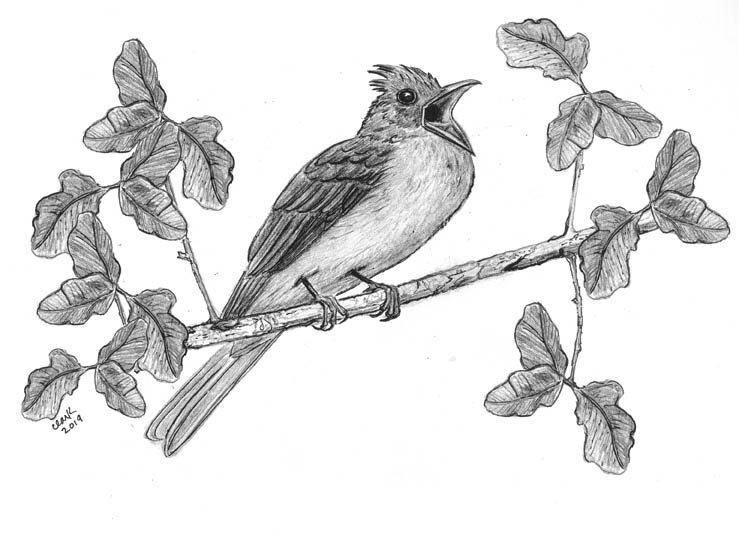
Dear Bird Folks,
I’ve been catching up on some of your past columns, including one about Limpkins, which I enjoyed. The name “Limpkin” strikes me as both funny and odd. With that in mind, what bird do you think has the oddest name?
– Adam, Westport, MA
Thank you, Adam,
Thank you for the kind words about my column and thanks for the fun topic to write about. Last week’s question about the decline of birds was kind of a downer. This week’s topic should be a lot lighter. I just have to be careful what I say. I don’t want to be accused of name shaming. We all know how sensitive birds can be.
Before I begin, I want to point out that the birds on this list are real. They all actually exist in the world. Also, I’m not going to include any awkward names, such as titmice or boobies. That would be too easy. Plus I recently wrote about New Guinea’s “Arfak Catbird” and that upset a guy from Barnstable, who was worried that “children might read it.” Huh? No, really, huh?
The first bird on this list is the Tawny Frogmouth. I’m not talking about just any frogmouth here, but the “Tawny Frogmouth,” which is a distinction I don’t think anyone cares about. Tawny Frogmouths are native to Australia. They are nocturnal hunters and are often confused with owls, which they sort of look like. But owls have powerful talons, while frogmouths’ feet are weak. Instead, frogmouths grab prey with their large, frog-like mouths. Their quarry sometimes consists of small mammals and birds, but most often they eat night-flying insects. Since the Tawny Frogmouth is nocturnal, it roosts during the day, often in plain sight. Fortunately, the bird’s plumage is super-cryptic, making it virtually invisible to predators. Speaking of invisible… Indonesia has a flightless rail that makes its home in the impenetrable swamps on the island of Halmahera. While all rails are really hard to find, this particular rail is especially difficult to see; thus, it was given the name, “Invisible Rail!” While Invisible Rail sounds like a superhero (“This is a job for the Invisible Rail.”), the bird actually has its share of problems. Its home is limited to a single island, it can’t fly and the local people want to eat it. That’s not a great combination, so it’s a good thing it’s invisible.
Next is a bird from Africa that apparently has gotten tired of all the tourists on safari. It’s called the “Grey Go-away-bird” (really). Looking like a big catbird with a fluffy head-crest, go-away-birds are often found in urban parks, where they feed on flowers and fruit, with the occasional termite for dessert. When our catbird is upset, it says, “mew,” while this bird says, “kweh.” To some ears kweh also sounds like “go away,” but not mine. I’ve listened to several recordings and I hear nothing that sounds like go away. And if anyone should know what go away sounds like, it’s me. I hear it a lot. Nevertheless, it’s still a great name.
Africa has another bird on this list and it’s way, way bigger than the go-away-bird. It’s the Shoebill. While its name sounds like an invoice from Foot Locker (Did you pay your shoe bill?), the Shoebill is a large (nearly five feet tall) stork-like bird. As the name implies, the beak on this bird is long, wide and sturdy, looking like a farming implement attached to a face. The massive bill allows the bird to capture and eat a variety of prey, including fish, snails and even baby crocodiles. I recently read a story (with documenting photographs) about a Shoebill that had come upon a quacking duck. The big bird grabbed the duck and lifted it high into the air. But instead of eating it, the Shoebill just moved the squawking bird aside and continued on its way. Apparently on this particular day, the Shoebill wasn’t in the mood for fresh duck (either that or it was out of orange sauce).
When I was preparing to write this column, I checked out odd bird names other folks had posted and there was a fair amount of duplication. But no one mentioned my-all time favorite weirdly named bird. What is it, you ask? From the tropics of South America, I give you the “Screaming Piha.” Try topping that name. (Piha is pronounced “pee-haw,” in case you didn’t know.)
In order to be noticed in the dense foliage, tropical birds tend to be colorful. This is not the case with the piha. About the size of a robin, the plumage of the piha is mostly washed out gray, with a hint of dingy brown just to add some pizzazz. But color isn’t what this bird is all about. When the piha wants to be noticed, it sits on a branch and gives its signature call. The first few notes are soft, dove-like coos. Pretty tame stuff. But then it explodes with a high-pitched screech, sounding like a cross between a wolf whistle and an NBA referee calling a foul. I may not have understood the reason for the go-away-bird’s name, but Screaming Piha fits this bird perfectly. Good job, whoever chose its name.
There is no shortage of odd bird names, Adam. Your bird, the Limpkin (so named because of its funky walk), could have easily been on my list. I also didn’t have room to discuss the “Lazy Cisticola,” the “Australian Boobook” and the oxymoronic “Greater Pewee.” Another bird I didn’t include is the “Snoring Rail,” which, again, is a real bird. I’ve never seen a Snoring Rail, but I hear one when I go to bed. My wife does a great impression every night.